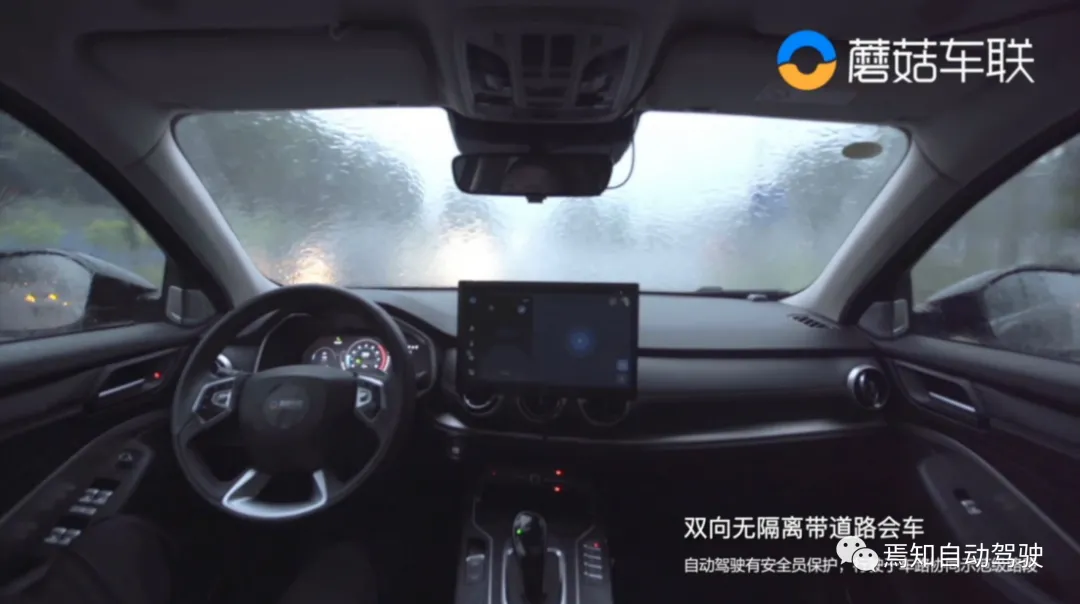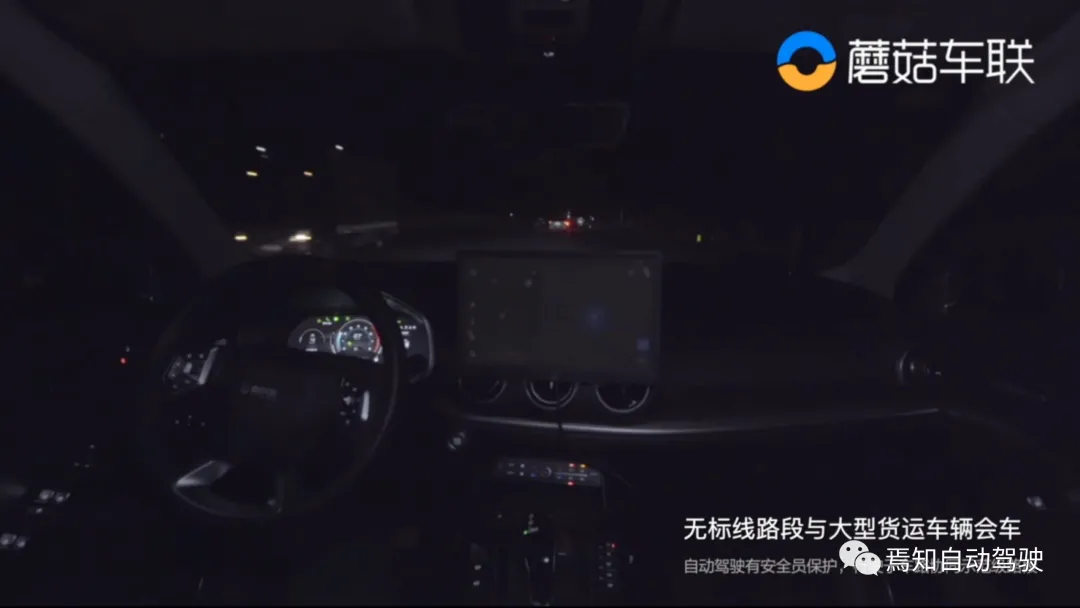From the United States to China, self-driving technology has been one of the important trends in the automotive industry in recent years. However, in the United States, accidents have been occurring continuously during the process from experimental to practical use of self-driving technology, making safety issues a key factor restricting the large-scale commercialization of self-driving technology.
Recently, five well-known automotive companies, including Tesla, Volvo, Cadillac, Lexus, and Navia, were investigated by the National Highway Traffic Safety Administration (NHTSA) in the United States due to accidents that occurred when the advanced driver assistance systems were activated. Among them, the investigation into Tesla’s self-driving accidents has increased to 30 cases.
However, as early as July last year, Mushroom Car Alliance, located in Beijing’s Shunyi Beixiaoying, successfully landed the country’s first vehicle-to-road cloud-integrated self-driving system on the country’s first open commercial 5G vehicle road cooperative road. During the test period, Mushroom Car Alliance’s self-driving vehicles encountered heavy rain, with a rainfall of up to 148.8 millimeters at one point, and water accumulated up to 30 centimeters in low-lying areas, with vegetation in some sections covering the lane markings. In the extreme weather and road conditions of having the windshield wipers off, having a nearly blind vision of the surroundings, and with complex scenarios such as unguarded left turns, serious water accumulation, counter-flow circumvention, and complex scene encounters, Mushroom Car Alliance still completed high-level autonomous driving safely and smoothly.

Why does the US have frequent self-driving safety accidents?
John Dolan, the chief scientist of Argo Lab at Carnegie Mellon University’s autonomous driving research center, believes that “autonomous driving has already solved most of the problems in the underlying architecture and technology, but the remaining 5% of edge cases are difficult to overcome, including fragmented scenarios, extreme situations, and unpredictable human behavior.”
Take Tesla’s several self-driving accidents as an example. The investigation report shows that in its Autopilot system, the wide-angle close-up camera that can recognize white trucks can only perceive the surroundings at a farthest distance of about 50 meters. When the vehicle is traveling at high speeds, it can travel about 30 meters in one second, leaving the autonomous driving system less than 2 seconds of reaction time, which is insufficient to meet the time and distance required for emergency braking.
The industry generally believes that due to the limitations of the system architecture design, the safety of autonomous driving technology on a single vehicle has encountered bottlenecks. So, is the safety bottleneck of self-driving technology really unsolvable?Chinese self-driving companies led by Mogu Chi Lian provide the answer. They adopt a vehicle-road-cloud collaborative autonomous driving system solution, which effectively integrates road-side perception and cloud-based perception on top of single-vehicle autonomous driving, achieving dynamic, real-time full coverage of road traffic elements and providing system-level safety guarantees for autonomous driving, indicating a new direction for the large-scale landing of autonomous driving. Among them, Mogu Chi Lian is the pioneer and leader of this technological route.
It is reported that the comprehensive vehicle-road-cloud solution of Mogu Chi Lian is based on vehicle-road collaboration, effectively making up for the insufficient reliability and safety of single-vehicle environmental sensors in terms of identification accuracy, stability, and environmental identification algorithms and vehicle decision algorithms, fully meeting the commercial requirements of high-level autonomous driving. By setting sensors, edge computing centers, and communication equipment on the road to obtain environmental information, the system improves the vehicle’s perception range and accuracy, while combining cloud platform information and high-precision map information, assists vehicle decision-making, and improves the reliability of vehicle autonomous driving solutions, promoting the rapid landing of products and technologies with application requirements and business models such as scenario autonomous driving.
The vehicle-road-cloud integration includes a layered perception system composed of the vehicle end, the road end, and the cloud end. The real difficulty of autonomous driving lies in perception, and the bottleneck of single-vehicle intelligent solutions is the perception bottleneck. The value of layered perception lies in the fusion of the vehicle’s 0-50 meters proximity, the road-side 50-200 meters medium distance, and the cloud-side 200 meters-5 kilometers distance, which gives autonomous driving sufficient safety redundancy. Compared with vehicle-side perception, road-side and cloud-side environment adaptability is stronger and less affected by extreme weather and complex working conditions.
The biggest challenge of heavy rain to autonomous driving is that the single-vehicle perception system almost fails. The laser radar reflects more noise due to water accumulation, the camera image is blurred, and the confidence in target identification is reduced. Mogu Chi Lian’s vehicle-road-cloud integration autonomous driving system provides vehicles with multiple sets of redundant perception capabilities, effectively solving the above problems. Even in the case of water-covered road markings, the vehicle can still maintain precise positioning.
In the dark scene, the single-vehicle visual perception conditions are severely insufficient, the exposure time is prolonged, the sensitivity range is reduced, and the radar cannot identify obstacles due to the lack of color and semantic information feedback from the camera. Mogu Chi Lian’s vehicle-road-cloud integration allows vehicles to safely complete high-difficulty actions such as independent lane changing, turning left at an unprotected intersection, and encountering large freight vehicles on unmarked road sections even at night through comprehensive information from the road-side and cloud-side.
Behind Mogu Chi Lian’s ability to achieve this is its three leading core technologies in the industry.
 According to reports, Mushroom Car Alliance has leading L4 level autonomous driving technology globally, and has built a highly stable and reliable autonomous driving system for bicycles. It can integrate comprehensive information from roadside and cloud, which is more suitable for the actual traffic situation on open roads in Chinese cities.
According to reports, Mushroom Car Alliance has leading L4 level autonomous driving technology globally, and has built a highly stable and reliable autonomous driving system for bicycles. It can integrate comprehensive information from roadside and cloud, which is more suitable for the actual traffic situation on open roads in Chinese cities.
In addition, Mushroom Car Alliance has broken through the bottleneck of bicycle intelligence and greatly improved the reliability and safety of autonomous driving through bicycle intelligence, vehicle-road coordination, and AI cloud platform to achieve fusion perception, collaborative positioning planning, and collaborative decision-making. It is the only vehicle-road-cloud integration system in China that is leading domestically.
Meanwhile, Mushroom Car Alliance also has the largest cloud control platform in China, creating a holographic data perception system with full coverage of traffic elements and a scenario-based intelligent decision-making service. It is the only transportation big data platform in China that has both transportation AI underlying systems and application operating systems.
With the support of leading technology, Mushroom Car Alliance’s autonomous driving has already entered a new stage of large-scale commercial application. In March of this year, Mushroom Car Alliance signed a strategic cooperation agreement with the Hengyang Municipal Government. The two parties have conducted in-depth cooperation in the fields of intelligent terminals, vehicle-road coordination, autonomous driving and smart transportation, jointly building a smart transportation innovation demonstration city, promoting large-scale landing and commercial operation of autonomous driving in cities. In addition, Mushroom Car Alliance’s autonomous driving has also landed in Beijing, Suzhou, and other cities for operation.
It is reported that the first batch of autonomous driving fleets has entered the main roads in Hengyang in batches and started commercial operation, which are used in Hengyang tourism sightseeing buses, microcirculation public transport, park commuting shuttles, and expressway buses.
This is also the first autonomous driving fleet in China that integrates vehicle-road-cloud, which enters the main urban traffic arteries, marking a new stage of the landing of autonomous driving in city-level main traffic arteries. Mushroom Car Alliance’s autonomous driving vehicles will also cover urban public transportation such as intelligent driving ride-hailing cars and urban public service scenes such as logistics vehicles, sweeping vehicles, and patrol cars.At the just-concluded 11th China Automotive Forum, Fu Bingfeng, Executive Vice Chairman and Secretary-General of the China Association of Automobile Manufacturers, mentioned that “putting data on government platforms and minimizing vehicle-side collections should be the direction for single-vehicle intelligence and V2X solutions.” In December last year, the Ministry of Transport issued the “Guiding Opinions on Promoting the Development and Application of Road Traffic and Autonomous Driving Technology”, which proposed that by 2025, positive progress will be made in the basic theory research of autonomous driving, and important breakthroughs will be made in the research and development, testing and verification of key technologies and products such as intelligent road infrastructure and vehicle-infrastructure coordination.
In February of this year, the “National Comprehensive Three-Dimensional Traffic Network Plan Outline” issued by the State Council proposed that in the next 15 years, by realizing the full coverage of Beidou space-time information service and transportation perception, China’s intelligent connected vehicles (smart cars, autonomous driving, vehicle-infrastructure coordination) will reach the world’s advanced level. From this, it can be seen that the country has already made a choice on the route of autonomous driving technology, and in the field of single-vehicle intelligence and vehicle-infrastructure coordination, the balance is tilted towards the latter. This means that vehicle-infrastructure coordination will replace single-vehicle autonomous driving and become the development direction of China’s autonomous driving in the future.
This article is a translation by ChatGPT of a Chinese report from 42HOW. If you have any questions about it, please email bd@42how.com.